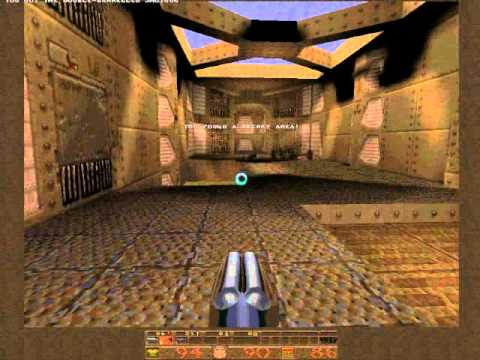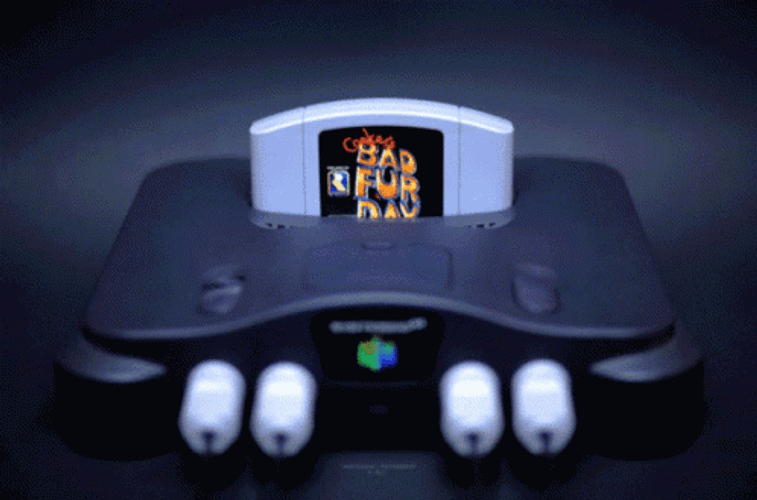Nintendo 64 console - The 3D Graphics That Changed Gaming Forever
From pixelated pioneers to cinematic marvels, the journey of video game graphics has been nothing short of extraordinary. In the early days, game visuals were confined to 2D sprites and basic backgrounds, reflecting the technical limitations of the hardware. However, a seismic shift was on the horizon, one that would forever alter the landscape of gaming: the advent of 3D graphics.
The birth of 3D graphics marked a watershed moment in the gaming industry. Gone were the days of flat landscapes and static characters — instead, gamers were thrust into worlds with depth and dimension. The transition was more than just a visual upgrade – it transformed the very essence of gameplay and storytelling. Suddenly, players could explore open environments, navigate through intricate mazes and interact with three-dimensional characters, all of which contributed to a heightened sense of immersion and engagement.
The power of 3D graphics wasn't merely confined to aesthetics. Retro games like Super Mario 64, Quake and Final Fantasy VII redefined genres, setting new benchmarks for platformers, first-person shooters and RPGs, respectively. These games showcased the potential of 3D visuals to revolutionise gameplay mechanics and narrative delivery.
In this article, we're embarking on a captivating deep dive into the 3D graphics that reshaped the gaming landscape. We'll journey through the milestones that brought us to the present day, exploring the games that pushed boundaries, shattered conventions and ignited the imagination of gamers and developers alike. So fasten your seatbelts, as we delve into the immersive worlds and groundbreaking innovations that have made 3D graphics the cornerstone of modern gaming.
The Dawn of 3D Graphics
The transition from 2D to 3D graphics in the world of video games was like discovering a new dimension, unlocking creative possibilities that forever altered how we interacted with virtual worlds. Let's journey back to the dawn of 3D graphics, where bold experiments, technological limitations and groundbreaking innovations shaped the course of gaming history.
Early Experiments with 3D Visuals
In the late 1970s and early 1980s, arcade games became the testing ground for early ventures into three-dimensional visuals. Titles like Battlezone (1980) and Star Wars (1983) utilised vector graphics to create rudimentary 3D environments, immersing players in thrilling space battles and tank combat. These games introduced gamers to the concept of depth perception and laid the foundation for future 3D experiences.
Limited Capabilities and Blocky Character Models
The transition to full 3D graphics was not without its challenges. Early consoles such as the Atari 2600 and the Intellivision struggled to render complex 3D environments due to their hardware limitations. Character models were often composed of simple geometric shapes, resulting in blocky avatars that were more symbolic than realistic. These limitations, while evident, hinted at the untapped potential that lay ahead.
Introduction of Polygons and the Shift from 2D to 3D Environments
The breakthrough came with the introduction of polygons. Games like Virtua Fighter (1993) and Tomb Raider (1996) embraced polygonal graphics, allowing for smoother character models and more intricate environments. The shift from 2D to 3D environments was particularly exemplified by Super Mario 64 (1996), where players explored Princess Peach's castle in a way that was both revolutionary and liberating.
The Game-Changers: Milestone 3D Titles
The evolution of 3D graphics in gaming was punctuated by a series of groundbreaking titles that not only pushed technical boundaries but also redefined entire genres. These milestone 3D titles stand as a testament to the transformative power of graphics in gaming. They reshaped genres, redefined player experiences and laid the groundwork for the breathtaking visual landscapes we traverse in contemporary gaming.
Super Mario 64 (1996)

Super Mario 64 revolutionised platforming, propelling Mario from 2D to 3D and reshaping gameplay. Its open-world environments encouraged exploration, granting players agency and discovery as they leapt into paintings and themed stages. This blueprint echoed across titles like Banjo-Kazooie and Psychonauts, inspiring developers to experiment with 3D platforming mechanics.
Quake (1996)

Popular 3D retro games like Quake reshaped FPS gaming by introducing immersive 3D environments and pioneering the first-person perspective. Its multiplayer capabilities ignited a global phenomenon, as players engaged in battles within fully realised 3D arenas, ultimately influencing the rise of online multiplayer. The game's fast-paced gameplay and utilisation of 3D landscapes laid the groundwork for modern esports, solidifying its status as a competitive gaming staple.
Final Fantasy VII (1997)

Final Fantasy VII marked Square Enix's transition to 3D cinematic RPGs, employing 3D character models to enhance storytelling. The game's cinematic cutscenes utilised 3D graphics for immersive narratives, bridging gaming and cinema. Its success popularised emotionally resonant, character-driven stories in a 3D space, paving the path for subsequent RPGs to explore intricate narratives.
Technological Advancements: Graphics Acceleration and Beyond
The evolution of gaming graphics isn't just a tale of pixels getting prettier — it's a narrative of technological leaps that propelled us into breathtaking new realms. Let's dive into the dual forces that reshaped gaming as we know it: the rise of dedicated graphics hardware and the dynamic world of physics engines.
Rise of Dedicated Graphics Hardware
In the late 1990s, gaming underwent a visual renaissance with the advent of dedicated graphics hardware, thanks to two industry titans: NVIDIA GeForce and ATI Radeon.
These heavyweights ushered in a new era of graphics. The GeForce and Radeon Series weren't mere hardware — they were gateways to lifelike environments that transcended the imagination.
This seismic shift wasn't just about sharper images, it also marked a transformation in how we perceived virtual worlds. With dedicated hardware in play, the rendering capabilities of games soared to new heights. Textures became tactile, lighting breathed life and shadows played tricks on our eyes. The result? Environments that beckoned us to explore, engage and immerse ourselves like never before.
The Role of Physics Engines
But the evolution didn't stop at visual fidelity. The rise of physics engines brought an entirely new dimension to the table, transforming interactions from scripted routines to dynamic experiences that mirrored reality.
Physics engines like Havok and PhysX injected authenticity into gameplay. Objects no longer behaved as pixels, but as entities governed by the laws of the physical world. The collision of objects, swaying foliage and rippling water — each detail resonated with a sense of realism.
To add to that, physics engines weren't just eye candy — they wielded the power to revolutionise gameplay. Puzzles stopped being static enigmas and became immersive challenges that demanded an understanding of the game's physics. This marriage of interactivity and realism enriched the very mechanics that define gameplay.
In the dynamic interplay between dedicated graphics hardware and physics engines, gaming was reborn. It wasn't just a hobby — it was an experience, a journey into worlds that were not just seen but felt. These advancements weren't just technological leaps — they were the building blocks of unforgettable gaming moments that would echo through generations.
From Pixels to Realms: The Evolution of 3D Graphics in Gaming
Fast-forward to the present, and the landscape of 3D gaming is an astonishing testament to the relentless pursuit of innovation and immersion. From vast open worlds to cinematic storytelling and even virtual realities, the evolution of 3D graphics continues to redefine the boundaries of gaming.
Pushing the Boundaries with Open World Gaming
Open-world games have become the epitome of how 3D graphics can transform gaming experiences. Titles like The Witcher 3: Wild Hunt and Red Dead Redemption 2 have sculpted vast, living worlds that pulse with realism. The level of detail in these expansive landscapes isn't just visually striking — it's an invitation to explore, interact and forge your own path through a rich tapestry of storytelling.
Elevating Cinematic Experiences through 3D
The integration of 3D graphics has also played a pivotal role in elevating the cinematic experience of gaming. Through meticulously crafted cutscenes, games like The Last of Us Part II and Horizon Zero Dawn seamlessly blend gameplay and storytelling. Characters express emotion, environments breathe with life and narratives unfold with a level of realism that blurs the lines between interactive entertainment and cinema.
Virtual Realities: 3D Beyond the Screen
And then there's the revolutionary realm of virtual reality (VR). VR technology thrusts players into a three-dimensional universe where they're no longer just observers but active participants. Titles like Half-Life: Alyx and Beat Saber epitomise how 3D graphics, when combined with VR, transcend the confines of a screen and immerse players in a world they can touch, feel and navigate in ways previously unimaginable.
Relive the Magic and Dive into the World of Early 3D Gaming with Retro Sales
As we wrap up our journey through the evolution of 3D graphics in gaming, one thing is clear: the past has paved the way for a mesmerising present and a thrilling future. From the humble beginnings of blocky avatars to the immersive realms of virtual reality, the trajectory of 3D graphics is a testament to the unwavering spirit of innovation within the gaming community.
If you're a collector yearning to relive the early days of 3D gaming, look no further than Retro Sales, your premier retro game store in Australia. We understand the thrill of nostalgia and the magic of diving into the worlds that ignited your passion for gaming. Our carefully curated collection boasts a treasure trove of titles that defined the 3D revolution, from Super Mario 64's groundbreaking platforming to Quake's explosive first-person shooter action.
But that's not all – we're not just about games. As your trusted source for all things retro gaming, we proudly offer the iconic Nintendo 64 console itself. Immerse yourself in a time when polygons were the future and embark on a gaming journey that captured the hearts of a generation with the Nintendo 64 console. And if your beloved N64 needs a little TLC, fret not – our Nintendo 64 repair services ensure that your console continues to stand the test of time.
Retro Sales isn't just a retro game store — it's a community of retro gaming enthusiasts who understand that the pixelated memories of the past are the foundation of our gaming present. So whether you're searching for classic NES controllers, unique N64 console models, buy N64 games, or just simply looking to get the Nintendo 64 in Australia to bask in the nostalgia of early 3D gaming, Retro Sales can help you relive the magic that shaped gaming history.
 is here! Shop now, pay later in 4 easy installments
is here! Shop now, pay later in 4 easy installments

